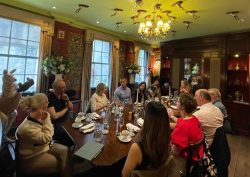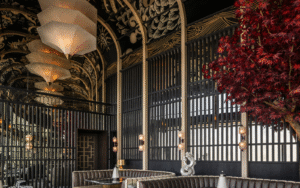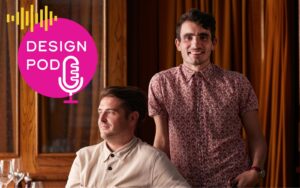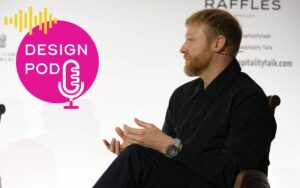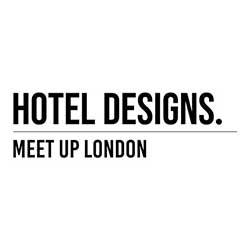Roundtable: Intuitive Design with Wellness in Mind
In a world where design and wellbeing are increasingly intertwined, Hotel Designs, in partnership with GROHE, brought together a panel of designers and brand experts to explore what it truly means to create intuitive design with wellness in mind…

Hosted at GROHE’s sleek showroom inside the Business Design Centre, the discussion flowed from the fundamentals of frictionless guest experiences to the subtle alchemy between technology, sustainability, and emotion.
Around the table were Sophie Harper, Editor of Hotel Designs, Louis Pullen, who oversees GROHE’s architect and design division; Patrick Speck, Head of Design for LIXIL Global Design; Luke Forster, managing GROHE’s hospitality channel for the UK and Ireland; and an inspiring mix of designers and creatives including Tom Thorogood, Partner and Co-Head of Interiors at Studio Moren; Chris Thornley, Associate Director from Conran and Partners; Ramona Bittere, Founder of Monce Designs & Co.; and Helen Gilbert, Creative Strategist at 3Stories.
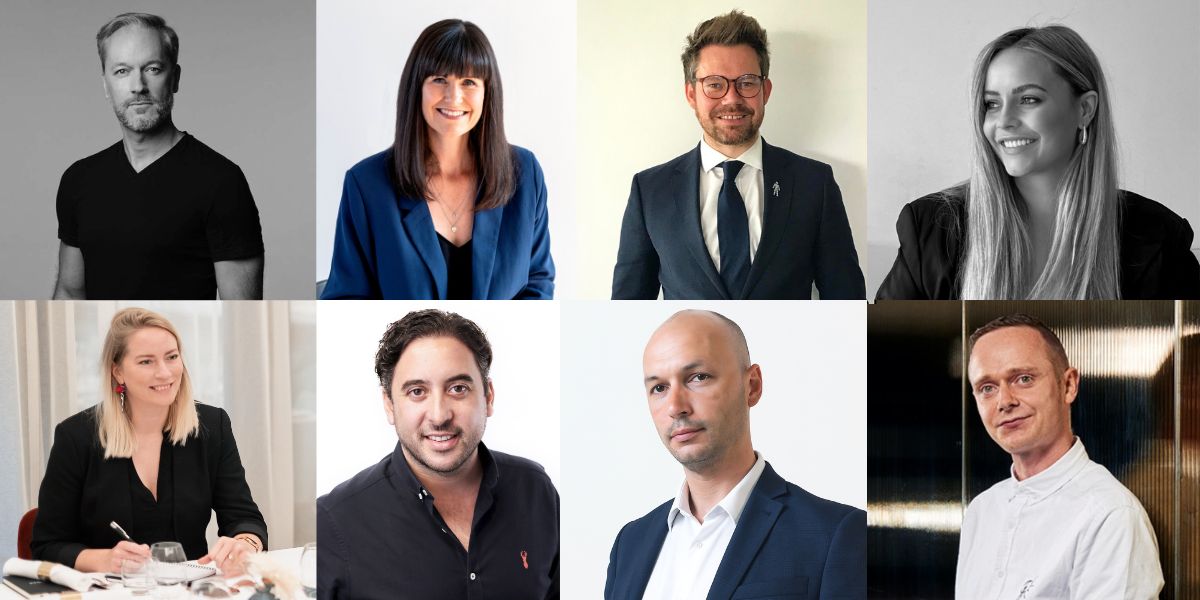
Pictured top from left to right: Patrick Speck, LIXIL Global Design; Helen Gilbert, 3Stories; Louis Pullen, GROHE; Ramona Bittere, Monce Designs & Co.; Sophie Harper, Hotel Designs; Tom Thorogood, Studio Moren; Luke Forster, GROHE; Chris Thornley, Conran and Partners
Sophie Harper: When designing hotel spaces with wellness in mind, what principles guide your definition of ‘intuitive design’?
Helen Gilbert: My initial word is ‘frictionless’. From the moment you touch or experience anything in a hotel bedroom, you shouldn’t have the pain points. I think the biggest frustrations are the things you remember – getting out of the shower and realising there’s nowhere to hang your towel, or nowhere to put your things.
Tom Thorogood: For me, it’s about starting by what would be painful, and then kind of layering into something that you can add the point of difference, but if you’re already failing at the basics, then that’s not intuitive. The other thing is layouts and making sure what you’re doing makes sense to the guest. I always ask, how will someone use this space. There are always curveballs, but designers are problem solvers, so you have to look at a space and figure out how to make things as easy and ‘frictionless’ as possible for the end user.
Chris Thornley: That’s where understanding who the end user is really makes a difference. There are only so many ways you can design a hotel room, and as designers, everyone wants to do something different, but actually there are certain formulas that work and make sense, so to do something different is actually quite tricky.
Sometimes you have a ‘square peg, round hole’ situation, but if you understand who the end user is, you can define what intuitive means to that person.
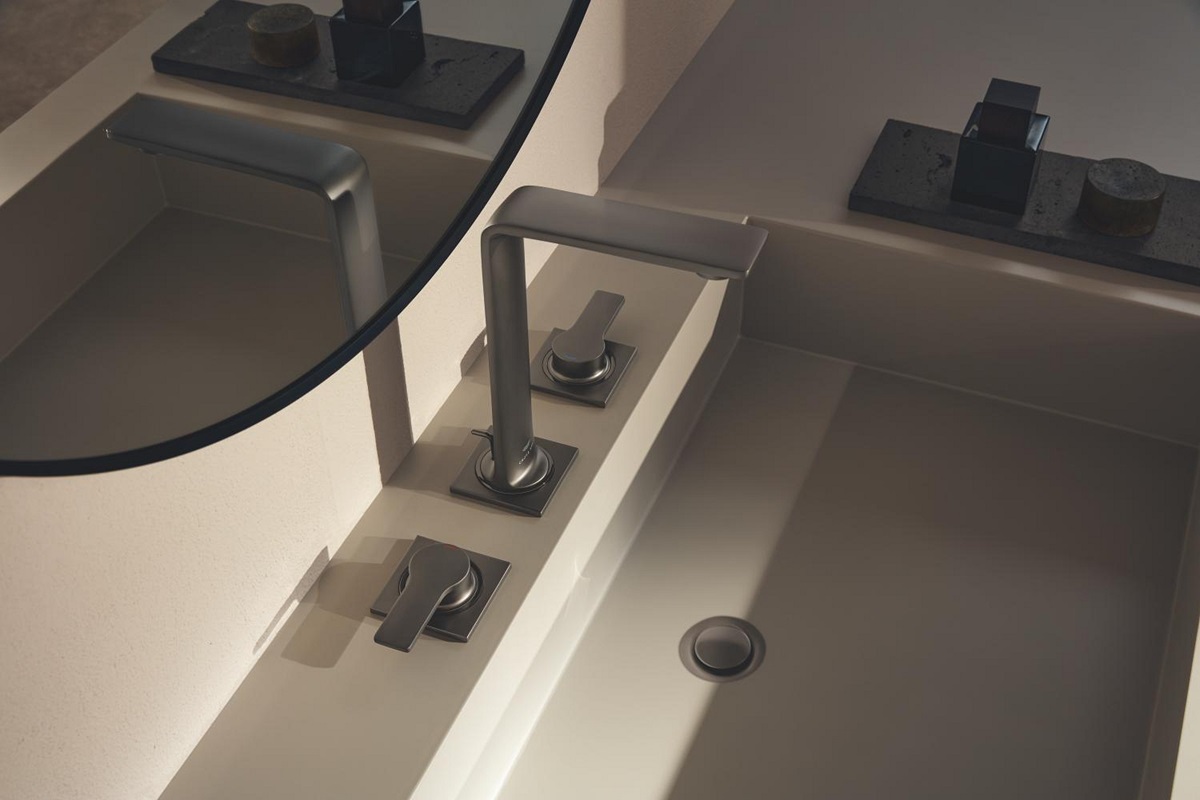
Sophie: How do you balance guest autonomy and choice with the risk of overwhelming them through overly complex controls or design features – and how do you mitigate against potential ‘pain points’?
Helen: There should be that kind of understanding of your demographic, your client, your brand, what’s important to them. Just doing that before you even get pen to paper. It doesn’t necessarily take tons of research, just speak to three women and you’ll immediately know how each of us uses a space – and it’s likely there will be plenty of similarities.
You know a guest room will have a bed, a bathroom, there are going to be certain components. But what’s your brand? What are your values? What’s the thing that you’re trying to offer? And how do we create a space that answers that? And then sense check the particular basics. I still don’t understand how people miss the basics.
Tom: Sometimes technology can get in the way of a seamless guest experience. You don’t need to give guests control of everything – for lighting, keep it simple – it’s not about giving the guest everything they could ever think of, it’s about offering a curated choice.
Patrick Speck: Exactly! Technology should enhance the experience, not become another friction point. You don’t want to have to go through menus and sub layers just to take a shower. The bathroom should be a place to retreat from digital overload, not add to it. At GROHE our aim is to offer flexibility without complication. Our modular shower systems allow designers to create a ‘choreography of water’ that can be tailored to each project – a technical approach that remains user-centric.
Ramona Bittere: From a designer’s point of view, we just like simple. We really love simple and also operators ask for simple. So we heavily rely on suppliers to figure out all the technical things and deliver it to us in a very simple way. We know the process isn’t necessarily simple in order to achieve this, but being able to pair simplicity with luxury – that’s the perfect combination.
Helen: You really need to sleep in the mock-up room. You can’t judge it with ten people in suits standing around. You have to experience it – how you move through the space, where you put your bag, what you see when you lie on the bed.
Tom: At least the mock-up room gives you the confidence to try something a little outside the box. If it doesn’t work, you know when to stop – don’t overdesign it.
Chris: Design has to function before it can flourish. If it doesn’t work, it creates friction – and friction kills wellness.

Sophie: How is the growing emphasis on sustainability influencing your approach to intuitive, wellness-focused hotel design?
Louis Pullen showcased GROHE’s recent product innovations – from 3D-printed taps that use 55% less material to aerated showerheads that cut water flow by half without compromising the experience. He also touched on subtle engineering changes with major environmental payoffs.
Louis: We’re able to test products and initial designs prior to bringing them to market, and what we’ve found is the ability to minimise the materials of some products while retaining the function. We test with 3D printed prototypes, fine-tune them over the course of testing, make the brass versions and go through the same process. We’re also able to personalise products using different elements at this point too.
Patrick: You strip away the unnecessary – it’s minimalism as sustainability. We straightened the angle of one of our best-selling showers so it could be shipped flat-packed. It looks better and you can ship more units with less packaging. No loss of function, but huge gain in efficiency.
Luke Forster: Still, sustainability has to be woven in without compromising performance. People care about sustainability up until the point it compromises their experience – the guest still wants a great shower. Water consumption is a whole other testing process that we’re constantly refining.
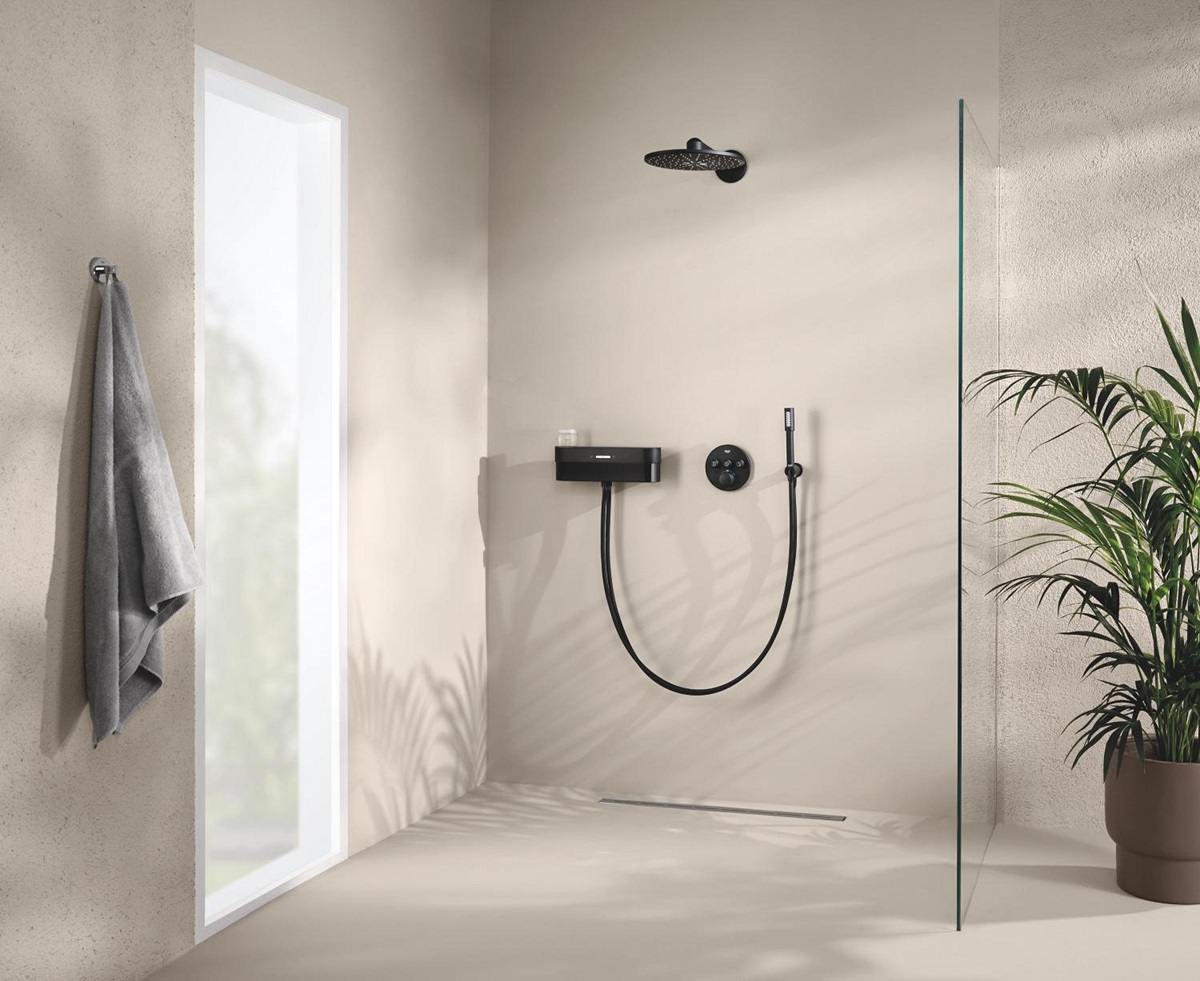
Sophie: Looking ahead, what design innovations do you anticipate will redefine the hotel bathroom as a space for both functionality and wellbeing?
Chris: Health is already a major concern for most guests, we’re working on a project at the moment that is building a facility that focusses on longevity and they’re bringing in doctors and experts to give that service to high-end clientele. At some point, I think it will become the norm to walk into a hotel room and for it to register whether you need more sleep, vitamins etc.
Helen: It does sound quite futuristic, but the technology is there, isn’t it? We all have watches, phones, and wearable tech telling us our levels for most things, so why wouldn’t you walk into a space and know exactly what your body needs? I think it’s something that will potentially be rolled out across the luxury hotel sector.
Chris: It’ll be interesting to see how it then filters down to mid-scale and lifestyle projects.
Ramona: I think more and more we’ll see the branding becoming synonymous with the experience. For instance, making sure the branding is accessible to everyone, so you’re not only reaching your main market. You see it with fashion brands all the time – where consumers might not be able to afford the designer clothing, but they can afford the perfume or a candle – it builds future loyalty by levelling the playing field early on. Hotels are starting to do the same – maybe you can’t afford to stay with us, but why not come and enjoy an experience in the form of a spa treatment or afternoon tea. We’re seeing hotel brands launching their own products now too.
Tom: The same thing with memberships and hotel gyms. But there’s also more demand for creating something a bit ‘extra’ in the hotel experience. For a long time it was the case that guests would want to try and recreate hotel styling at home, then it shifted the other way where hotels became more familiar and homely, and now that people’s homes are kitted out with all the latest tech and becoming more stylish, hotels needs to offer something more creative to add interest and give guests something more than they already have.
Chris: That’s potentially where GROHE’s foam shower and other innovations we haven’t yet thought of will be game-changers.
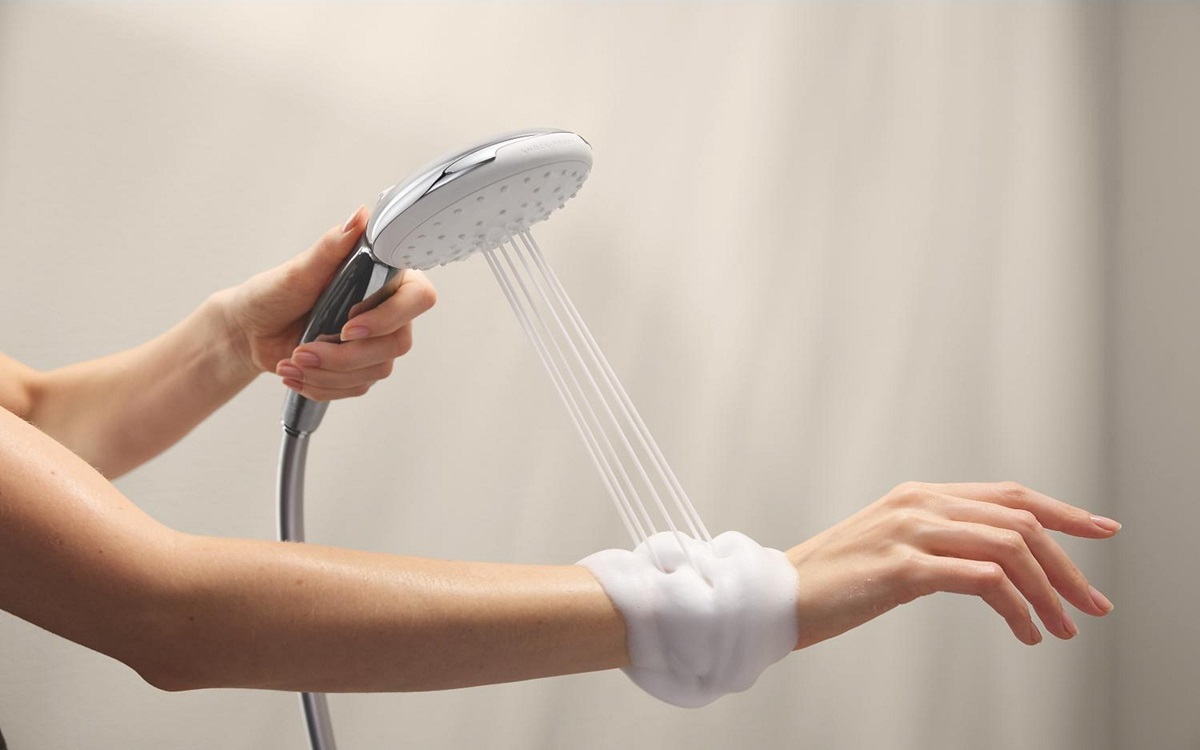
The morning at GROHE’s showroom proved that intuitive design isn’t necessarily about gadgets or grand gestures; it’s about thoughtful restraint supported by innovative solutions. From the placement of a towel hook to the flow of water, every detail contributes to wellness when it removes friction and adds calm.
If anything, the dialogue reinforced what GROHE and the design community already know: that the future of hospitality lies not in excess, but in effortless experience – where good design feels instinctive, sustainable, and quietly human.
GROHE is one of our Recommended Suppliers and regularly features in our Supplier News section of the website. If you are interested in becoming one of our Recommended Suppliers, please email Katy Phillips.
Main image credit: GROHE






